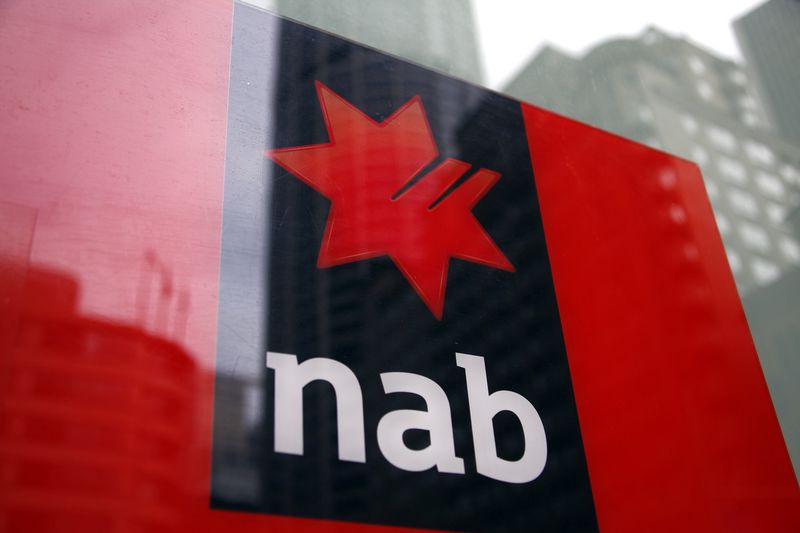* S&P puts major banks' credit rating on negative outlook
* Ratings downgrade would raise banks' cost of funds
* Banks will need A$7.3-A$31.2 bln to boost capital-analysts
* Aussie bank shares among worst performers on the ASX
By Swati Pandey
SYDNEY, July 8 (Reuters) - Australia's big banks might have hoped for a better 2016 after raising a record $20 billion ($15 billion) in new equity last year. How wrong they were.
This week alone Australia's "Big Four" - National Australia Bank NAB.AX , Commonwealth Bank CBA.AX , Westpac Banking Corp WBC.AX and ANZ Banking Group ANZ.AX - faced calls to raise further capital, threats to their credit ratings and a sharp surge in political uncertainty.
Ratings agency Standard & Poor's on Thursday put major Australian banks' ratings on negative outlook, implying a one in three chance of losing their AA- ratings within two years.
A downgrade would make the cost of financing more expensive for the "Big Four" at a time when regulators want them to put aside more cash to weather any repeat of the global financial crisis.
Raising capital will likely hit profits and make it more difficult for the banks to continue to distribute chunky dividends, which are a key source of revenue stream for shareholders such as the country's pension funds.
As revenue growth slows and the risk of loan impairments rise, the downgrade "presents another downside risk for the sector and is likely to impede an improvement in sentiment," Deutsche Bank (DE:DBKGn) analyst Andrew Triggs said.
The big banks, long among the world's largest and most profitable, are also vulnerable to the changing political landscape.
Tough new scrutiny is likely in the wake of Australia's knife-edge weekend election as a disparate group of lawmakers push for a wide-ranging inquiry into mis-selling, misconduct and market dominance concerns. Triggs expects approximately a 2 percent profit impact on average if major banks' ratings were to be downgraded by one notch. Offshore wholesale funding accounts for around one-fifth of Australia's major banks' total funding with local deposits and equity accounting for over 60 percent.
The cost of funding for Australian banks has risen even as the official cash rate has dropped to record lows of 1.75 percent. This is because the market prices in a higher risk of defaults for the banks. Meanwhile, banks lending rates are being squeezed by the rate cuts.
S&P's outlook change "shows why we cannot take international confidence in Australia for granted," Steven Munchenberg, chief executive of Australian Bankers' Association said in an emailed statement.
"It also highlights why an unpredictable and uncertain royal commission into banks is a risky proposition. Banks will continue to work to ensure they meet the required capital levels to remain unquestionably strong."
On Friday, Standard & Poor's said CBA, Westpac and NAB could hang on to their ratings but they would each need to raise between A$7 billion and A$8 billion in fresh capital over the next two years.
GATHERING STORM
Five analysts surveyed by Reuters after the rating outlook change estimated the "Big Four" will collectively need between A$7.3 billion to A$31.2 billion in additional equity over the next 2-3 years to create a large enough buffer to shield them from a repeat of the 2008/09 financial crisis.
Concerns centre around their exposure to the property market, where a potential bubble is building up in Sydney and Melbourne.
"It would be prudent for Australian (banks) to continue to plan for the likelihood of strengthened capital requirements in some areas," the Australian Prudential (LON:PRU) Regulatory Authority (APRA) said in a study published this week.
Following the record equity raisings in 2015, Australia's major banks Common Equity Tier ratio - a measure of balance sheet strength - has risen to 13.5 percent as at December 2015 from 11.7 percent in 2014.
While that puts them among the top quartile of international banks, they remain below the likes of UBS UBSG.S and Royal Bank of Scotland RBS.L at over 15 percent, and more than 20 percent for Swedish banks such as Swedbank SWEDa.ST and Svenska Handelsbanken SHBa.ST .
SIGN OF THE TIMES
Hedge funds are increasingly adding banks to their short positions on concerns of a housing bubble and rising loan impairments as the country transitions away from a mining boom, ASX data shows.
No wonder bank shares, once investor darlings, are now among the worst performers on the benchmark index .AXJO , down 15-17 percent this year.
Moody's in June said a rebound in property prices along with elevated household debt was "credit negative" and that the likelihood of an outright downward correction in house prices was rising. Australian banks are at risk as about two thirds of their balance sheets is exposed to mortgages.
Banks are turning cautious about lending to certain segments including property developers and have tightened lending criteria in recent months, thanks to increased supervision by regulators. ($1 = 1.3303 Australian dollars) (Editing by Lisa Jucca and Lincoln Feast)
